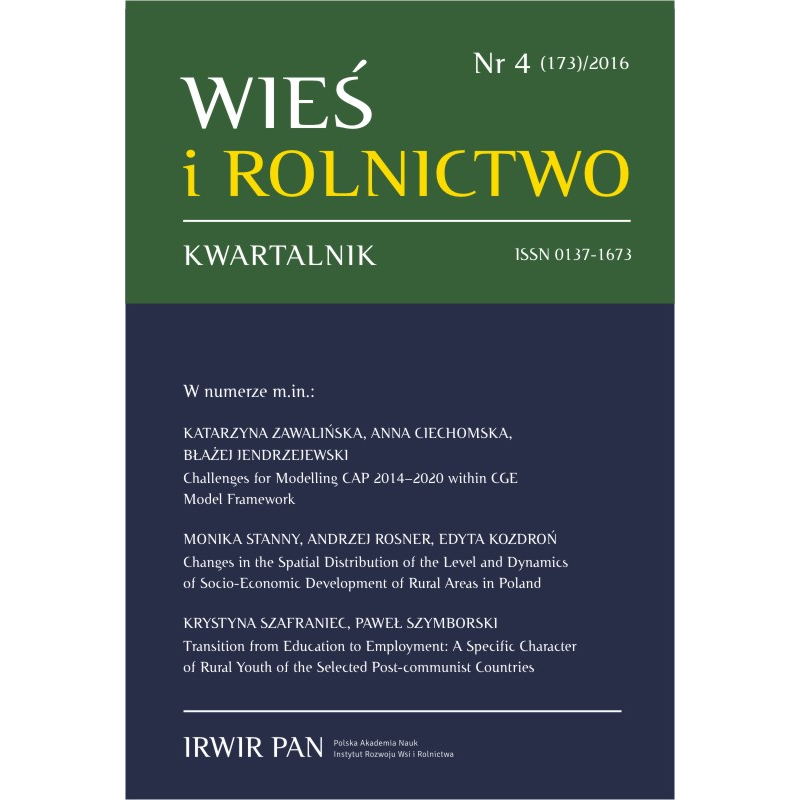
The transformation of Polish rural areas since 1989
This article focuses on an analysis of factors that have influenced structural change in Polish agriculture since 1989. The Republic of Poland was the only CEE country, pre-1989, which had 70% of its agricultural land in private hands. This turned out not to be a development asset as there were mostly small subsistence farms (ca 70%) at the core of Polish agriculture. This resulted in much of the rural area (except for that located in the vicinity of cities or renowned tourist centres) being dependant, to a large extent on both low-productive agriculture and agricultural policies. Now, after almost 25 years of transformation, structural change in agriculture (and rural areas) is slowing down as a result of EU Common Agricultural and National policies. The agrarian structure, dominated by subsistence farms, remains stable (average farm size below 10 hectares, in some South-Eastern regions NUTS 2 below 5 hectares). As a result rural areas are still in need of a deep restructuring and a modernization of economic structures2








